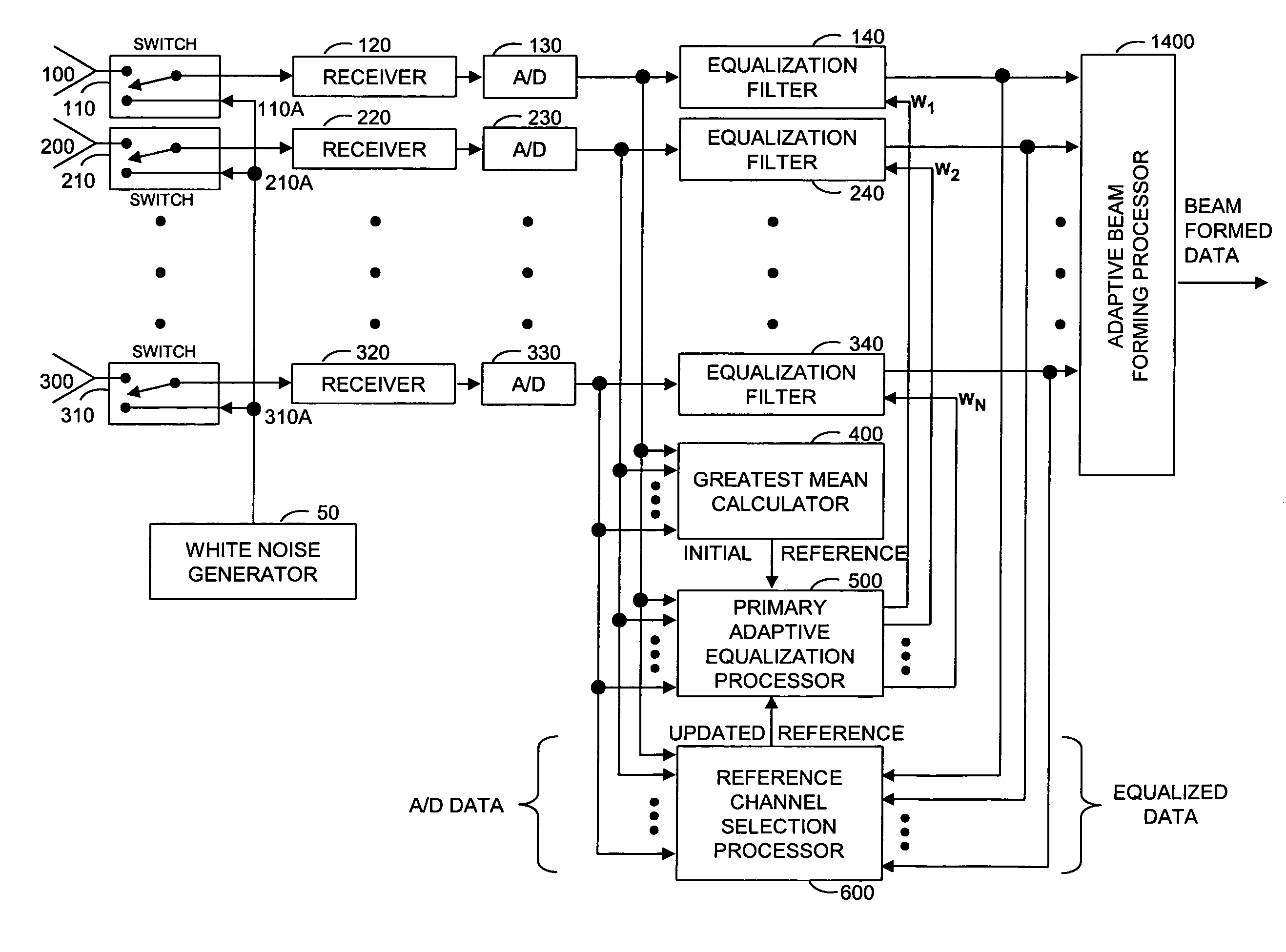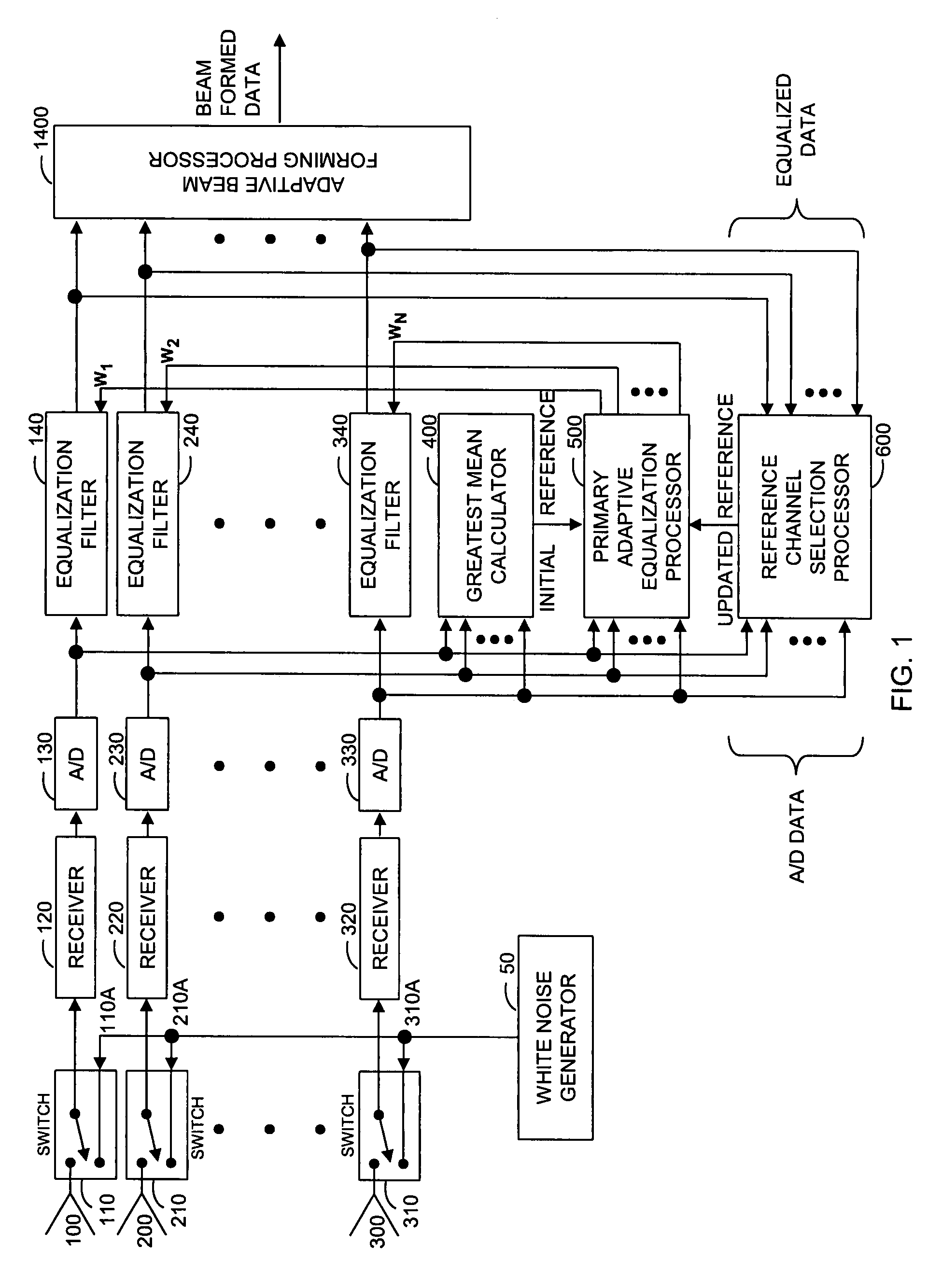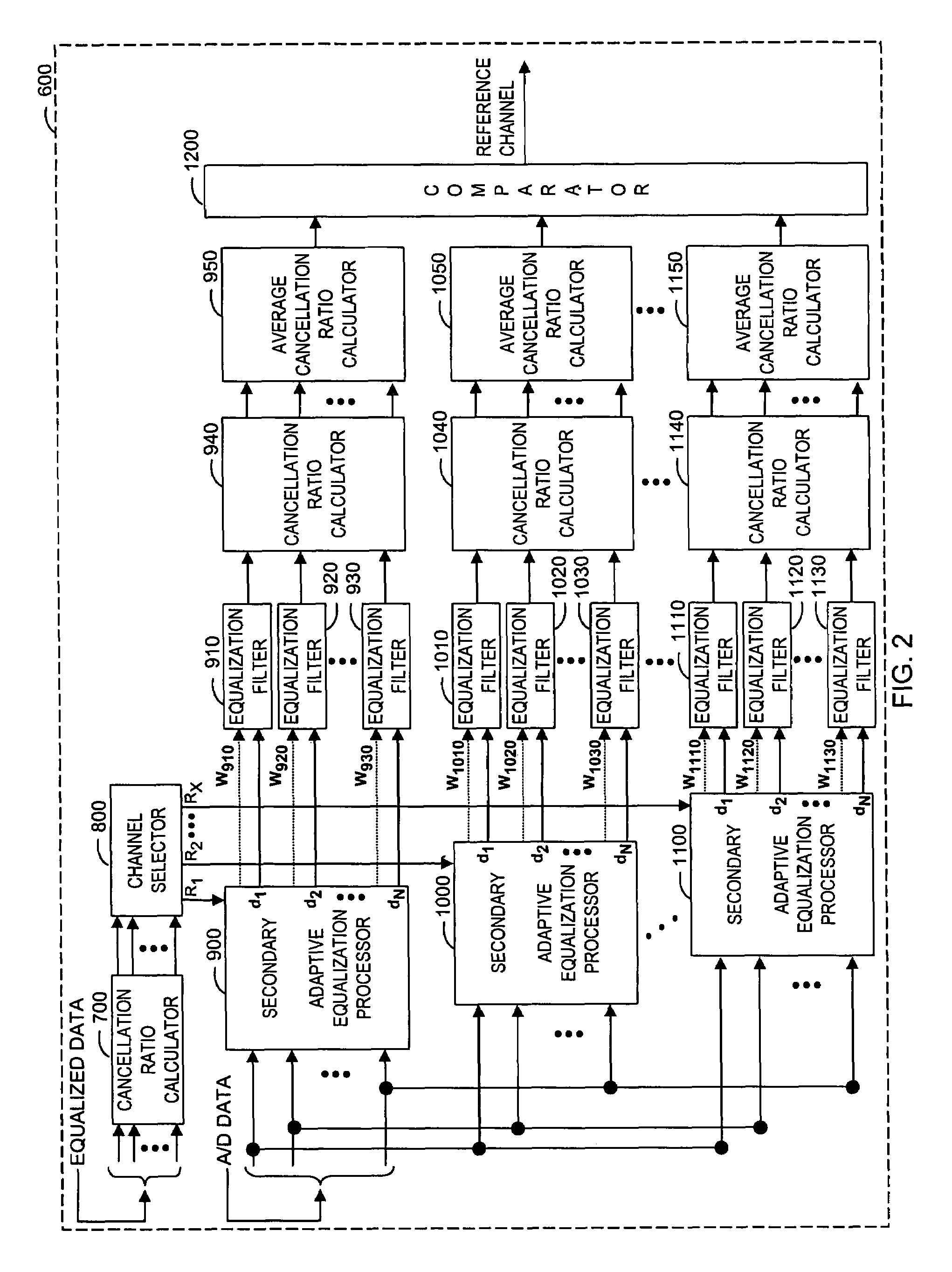Apparatus and method for multi-channel equalization
a multi-channel equalization and apparatus technology, applied in the field of apparatus and method for multi-channel equalization, can solve the problems of reducing channel matching, reducing channel equalization, and reducing channel equalization, so as to improve channel equalization, reduce system resources, and select the reference channel sufficiently fast
- Summary
- Abstract
- Description
- Claims
- Application Information
AI Technical Summary
Benefits of technology
Problems solved by technology
Method used
Image
Examples
Embodiment Construction
[0011]Referring now to the drawings wherein like numbers represent like parts
[0012]FIG. 1 shows a multi-channel communication system that performs equalization using adaptive processing techniques. During system operation, signals are received through inputs 100, 200, and 300, which correspond to receiver 120, receiver 220, and receiver 320. During system calibration, a white noise generator 50 is switched so that input 110A goes to receiver 120, input 210A goes to receiver 220, and input 310A goes to receiver 320. Any number of channels may be employed as is appropriate for a given application.
[0013]The first receiver channel includes a switch controlling inputs 100 and 110A which in turn are coupled to receiver 120. The output of receiver 120 is the input of analog-to-digital (A / D) converter 130 for sampling the signal received by receiver 120 and providing resultant samples to primary equalization filter 140, to the greatest mean calculator 400, to the primary adaptive equalizati...
PUM
 Login to View More
Login to View More Abstract
Description
Claims
Application Information
 Login to View More
Login to View More - R&D
- Intellectual Property
- Life Sciences
- Materials
- Tech Scout
- Unparalleled Data Quality
- Higher Quality Content
- 60% Fewer Hallucinations
Browse by: Latest US Patents, China's latest patents, Technical Efficacy Thesaurus, Application Domain, Technology Topic, Popular Technical Reports.
© 2025 PatSnap. All rights reserved.Legal|Privacy policy|Modern Slavery Act Transparency Statement|Sitemap|About US| Contact US: help@patsnap.com



